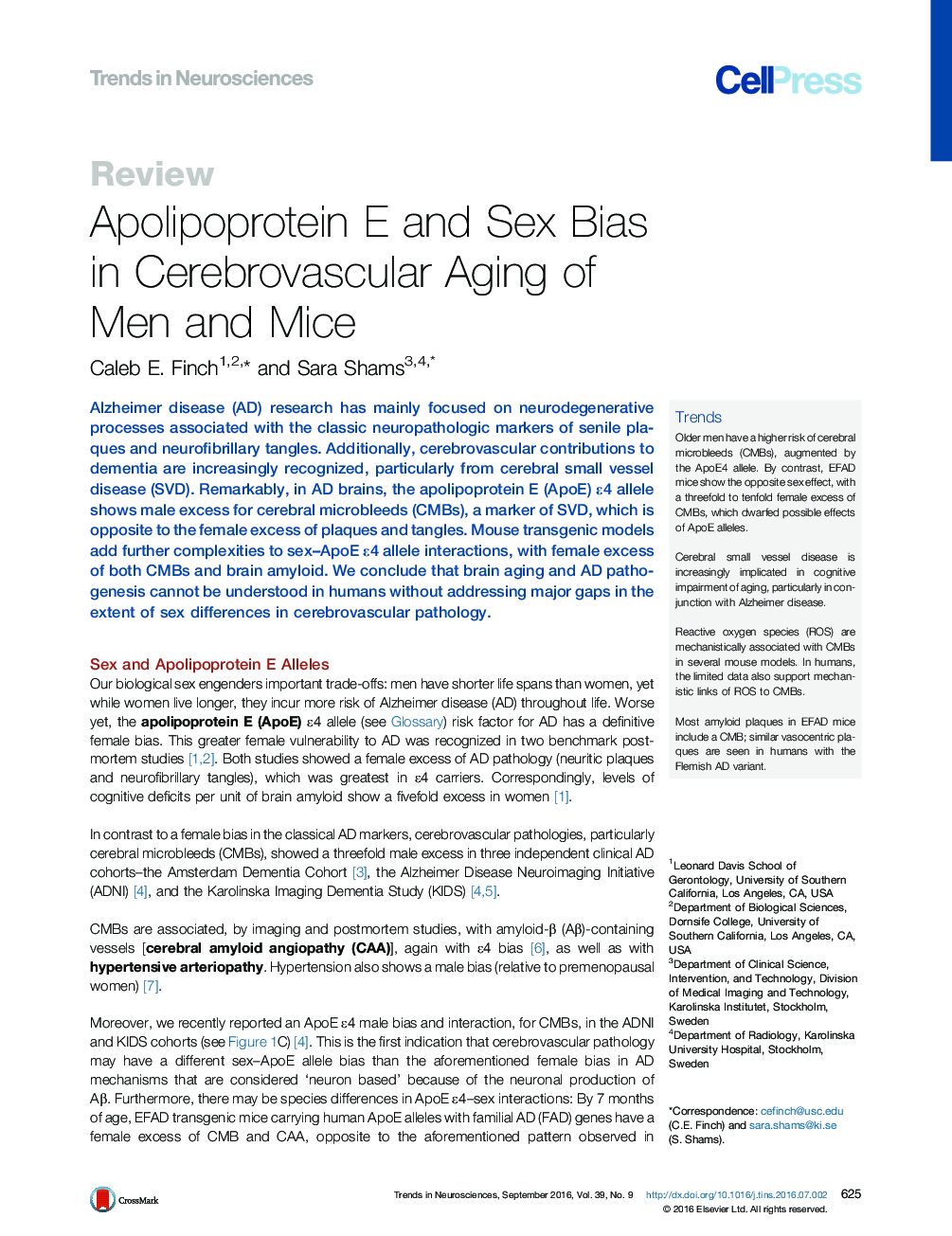| کد مقاله | کد نشریه | سال انتشار | مقاله انگلیسی | نسخه تمام متن |
|---|---|---|---|---|
| 4354091 | 1299009 | 2016 | 13 صفحه PDF | دانلود رایگان |

Alzheimer disease (AD) research has mainly focused on neurodegenerative processes associated with the classic neuropathologic markers of senile plaques and neurofibrillary tangles. Additionally, cerebrovascular contributions to dementia are increasingly recognized, particularly from cerebral small vessel disease (SVD). Remarkably, in AD brains, the apolipoprotein E (ApoE) ɛ4 allele shows male excess for cerebral microbleeds (CMBs), a marker of SVD, which is opposite to the female excess of plaques and tangles. Mouse transgenic models add further complexities to sex–ApoE ɛ4 allele interactions, with female excess of both CMBs and brain amyloid. We conclude that brain aging and AD pathogenesis cannot be understood in humans without addressing major gaps in the extent of sex differences in cerebrovascular pathology.
TrendsOlder men have a higher risk of cerebral microbleeds (CMBs), augmented by the ApoE4 allele. By contrast, EFAD mice show the opposite sex effect, with a threefold to tenfold female excess of CMBs, which dwarfed possible effects of ApoE alleles.Cerebral small vessel disease is increasingly implicated in cognitive impairment of aging, particularly in conjunction with Alzheimer disease.Reactive oxygen species (ROS) are mechanistically associated with CMBs in several mouse models. In humans, the limited data also support mechanistic links of ROS to CMBs.Most amyloid plaques in EFAD mice include a CMB; similar vasocentric plaques are seen in humans with the Flemish AD variant.
Journal: - Volume 39, Issue 9, September 2016, Pages 625–637